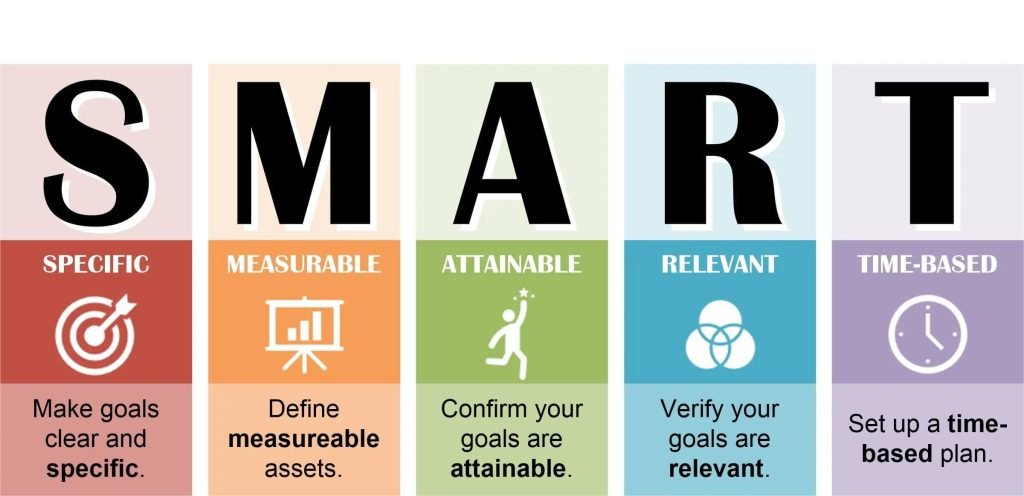No results available
ResetLearn what SMART goals are and how to set and achieve all your swimming goals for the new year ahead.
The New Year is here which means one thing: New Year’s resolutions, otherwise known as ‘new goals’.
Goals are a great thing to have as they help keep you on track throughout the year and keep you motivated on days when getting to the pool or ocean for a swim might be the last thing on your mind.
Whilst it’s easy to set goals, it’s important to know how efficient goal-setting works and how to create SMART goals to ensure you don’t end up disappointed if you don’t achieve them.
In this article, we’ll run through what SMART goals are and how to set and achieve all your swimming goals for the new year ahead.
SMART goals are an effective way of setting and achieving your goals. The S.M.A.R.T. in SMART goals stands for Specific, Measurable, Attainable, Relevant and Time-bound.
These parameters can help you create goals that are attainable within a certain time frame. By doing this you can see a clear timeline of when you want to achieve your goal by making tracking your progress easier.
An example of an overall SMART Goal looks like this:
My goal is to (quantifiable objective) by (specific timeframe). I will accomplish this goal by (list the steps it will take to achieve the goal). Accomplishing this goal will (list the results or benefits of achieving the goal).

It’s simple, goals help you stay on track.
But SMART goals help you create short-term and long-term goals while giving you milestones to tick off along the way to your final goal. SMART goals also give you a timeframe of when you need to achieve your goal, giving you more motivation to achieve your goal.
When it comes to goal setting you don’t need to tell everyone your goals. You can internalise them for yourself only, write them down as a visual reminder or stick them on a wall to look at every day, reminding yourself of what you want to achieve.
When sitting down to write SMART goals, start with ‘Specific’ and work your way down the list to finish with ‘Time-bound’.
For a goal to be effective and achievable it needs to be specific. You want your goal to be clear and well-defined. So, instead of setting a vague goal like “I want to swim faster by the end of the year,” set a more specific goal such as “I want to swim 100 metres in 1 minute 20 seconds by July.”
Setting a goal like this gives you a clear target of what you are working towards and allows you to track how you are progressing towards the goal.
Questions to ask yourself when setting a specific goal:
Setting a measurable goal allows you to quantify your goal, making tracking your progress easier and giving you a finish line to aim for.
A measurable goal should always include times and dates, to allow it to be easily measured. An example of a measurable goal is; “I want to swim 500 metres in under 8 minutes by December 2023” or “I want to reduce the number of strokes I take per lap from 50 to 45 by March 2023.”
You’ve reached the attainable part of SMART goal setting, now this is the part of the process where you have to give yourself a good reality check. You want to ensure your goals are realistic and are not setting you up for failure from the get-go.
Aim for your goals to be challenging but not too far out of reach that they are impossible to achieve and you become disheartened when you can’t reach them.
For example, you might have previously completed a 1km ocean swim, so your achievable goal for the new year is to “complete a 2km ocean swim by the end of 2023.”
Making sure your goal is relevant to your current interests, abilities and what you want to achieve in the big picture is important. You want all your short-term goals to fit in with your long-term goals, so you can use them as stepping stones to achieving your long-term goal.
For example, a beginner swimmer isn’t going to set a goal of going to the Olympics within the next year as that is not realistic or relevant. Instead, you would set a goal relevant to your current abilities such as “I want to swim 1km in the ocean” or “I want to learn how to swim backstroke and breaststroke.”
Setting a deadline to achieve a goal is important as it will help you stay motivated and on track and know you want to try and achieve your set goal by a specific time.
For example, “I want to swim a 4km session in the pool by November 2023” or “I want to participate in a 2km ocean swim event by April 2023.”
By using the SMART goal framework to help set goals for the new year, you will already be one step closer to achieving them, no matter how small or large they are.
If at any point you feel your goal isn’t going to be attainable for any reason, then don’t be afraid to adjust your goals to become more realistic to your circumstances.
Don’t forget to enjoy the journey along the way to achieving your goals and be sure to celebrate all the achievements on the ride, no matter how big or small they are.
No results available
Reset




Copyright © 1999-2024 oceanswims.com. All rights reserved.
‘OCEANFIT is a registered trademark of OceanFit Pty Ltd.